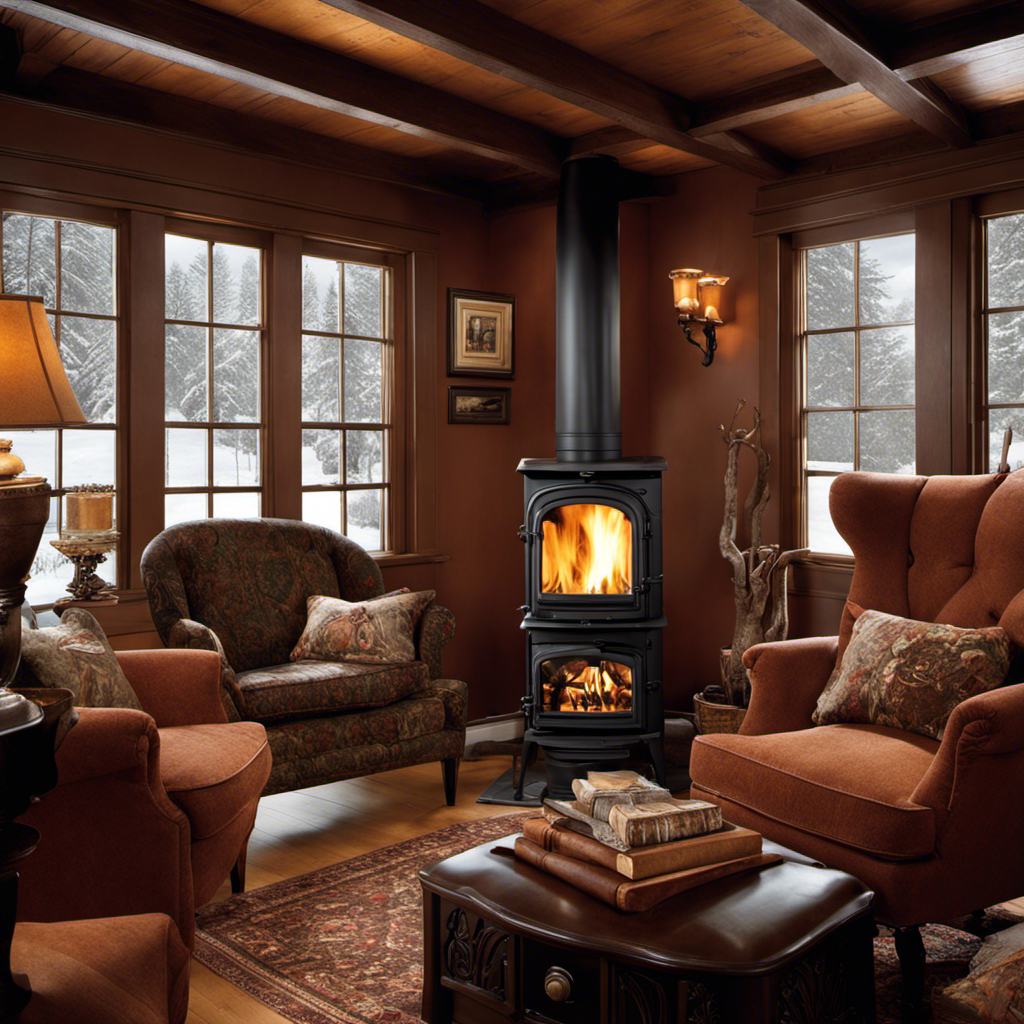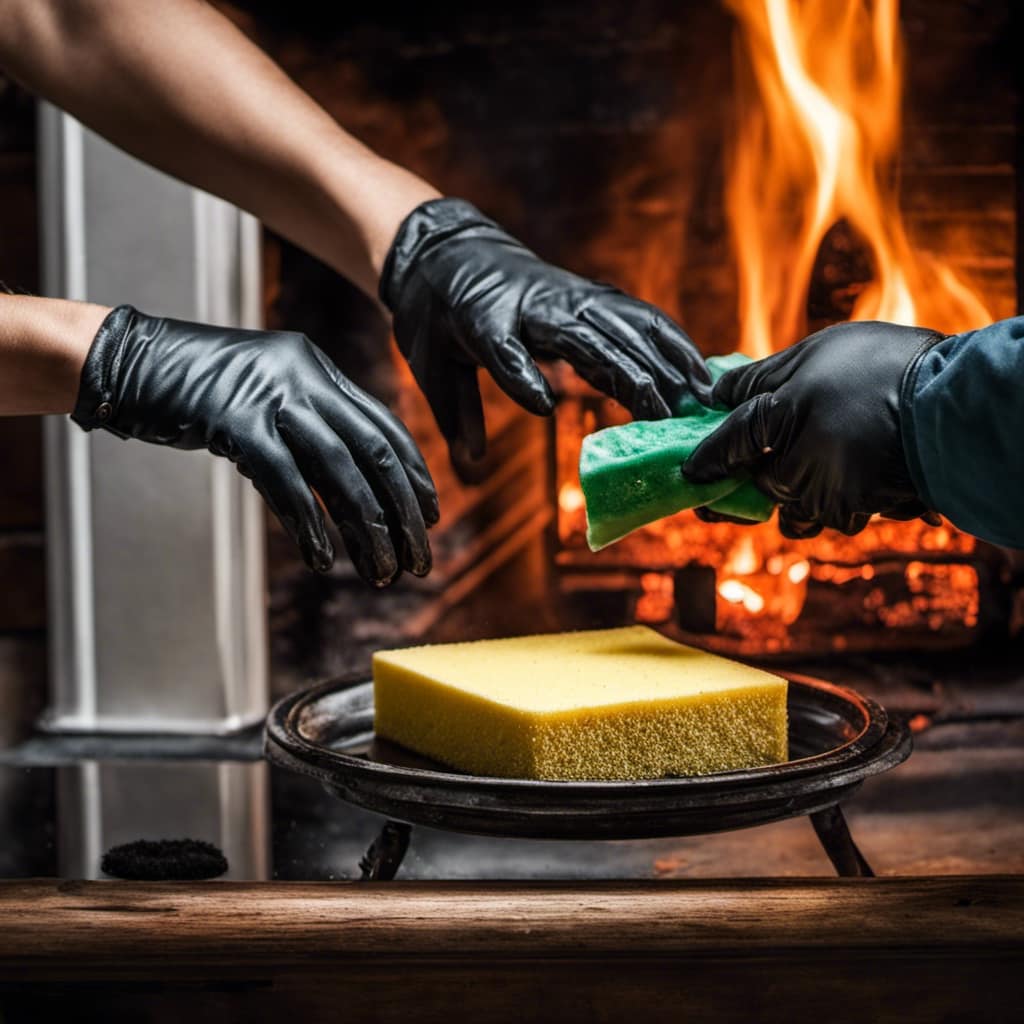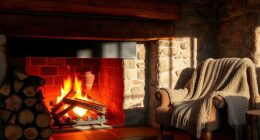You might be wondering – the idea of installing a wood stove pipe through the ceiling can seem overwhelming. However, I can guarantee you that it’s simpler than it looks!
In this step-by-step guide, I’ll walk you through the process of choosing the right pipe, preparing the ceiling, measuring and cutting the hole, connecting the pipe, and ensuring proper insulation and sealing.
By the end, you’ll be confident and ready to tackle this project on your own.
Key Takeaways
- Choose the correct size and type of wood stove pipe for safety and efficiency.
- Prepare the ceiling by turning off electrical power and marking the location of ceiling joists.
- Measure accurately and cut the hole in the ceiling with appropriate tools and safety precautions.
- Install and connect the wood stove pipe securely, ensuring proper alignment and straightness.
Choosing the Right Wood Stove Pipe
I think the most important factor when choosing a wood stove pipe is ensuring it’s the correct size for my stove and meets all safety requirements.

One of the advantages of using a double wall pipe is that it provides an extra layer of insulation, reducing the risk of overheating and potential fire hazards. Double wall pipes are also more efficient at retaining heat, which means better heat distribution throughout the room.
When it comes to the types of pipe materials available, there are mainly two options: stainless steel and black stove pipe. Stainless steel pipes are more durable and resistant to corrosion, making them a popular choice. On the other hand, black stove pipes are more affordable and can be painted to match the surrounding decor.
Preparing the Ceiling for Installation
To get started, I’ll need to make sure the ceiling is ready for the installation.
Before beginning any work, it’s important to take safety precautions. First, I’ll make sure to turn off any electrical power running through the area.
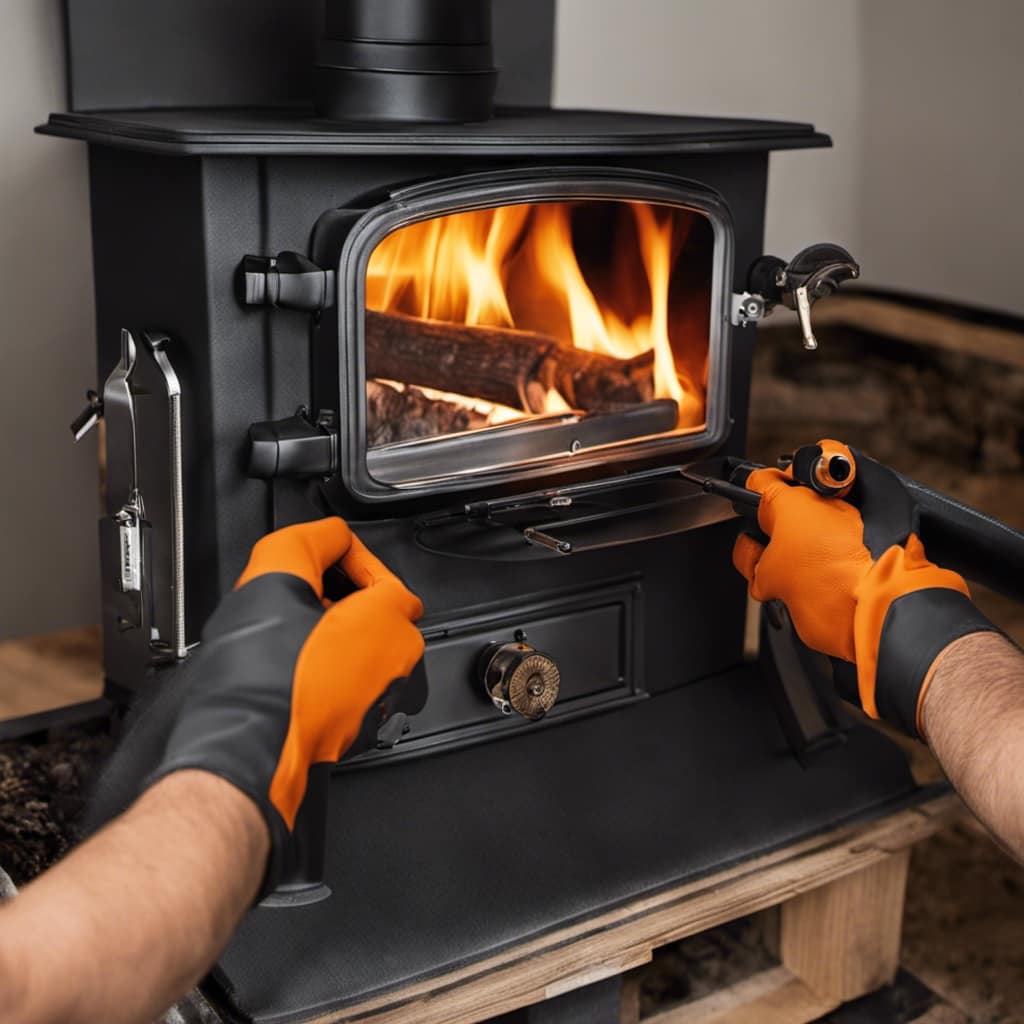
Next, I’ll gather the necessary tools and materials, including a stud finder, drill, and appropriate size hole saw.
I’ll locate the ideal spot for the wood stove pipe to pass through the ceiling, ensuring it’s away from any obstructions. Using the stud finder, I’ll mark the location of the ceiling joists to ensure a secure installation.
With the hole saw, I’ll carefully cut a hole through the ceiling, making sure to follow the manufacturer’s guidelines for size and placement.
Measuring and Cutting the Hole in the Ceiling
I’ll carefully measure and cut a hole in the ceiling using the appropriate tools and following the manufacturer’s guidelines.
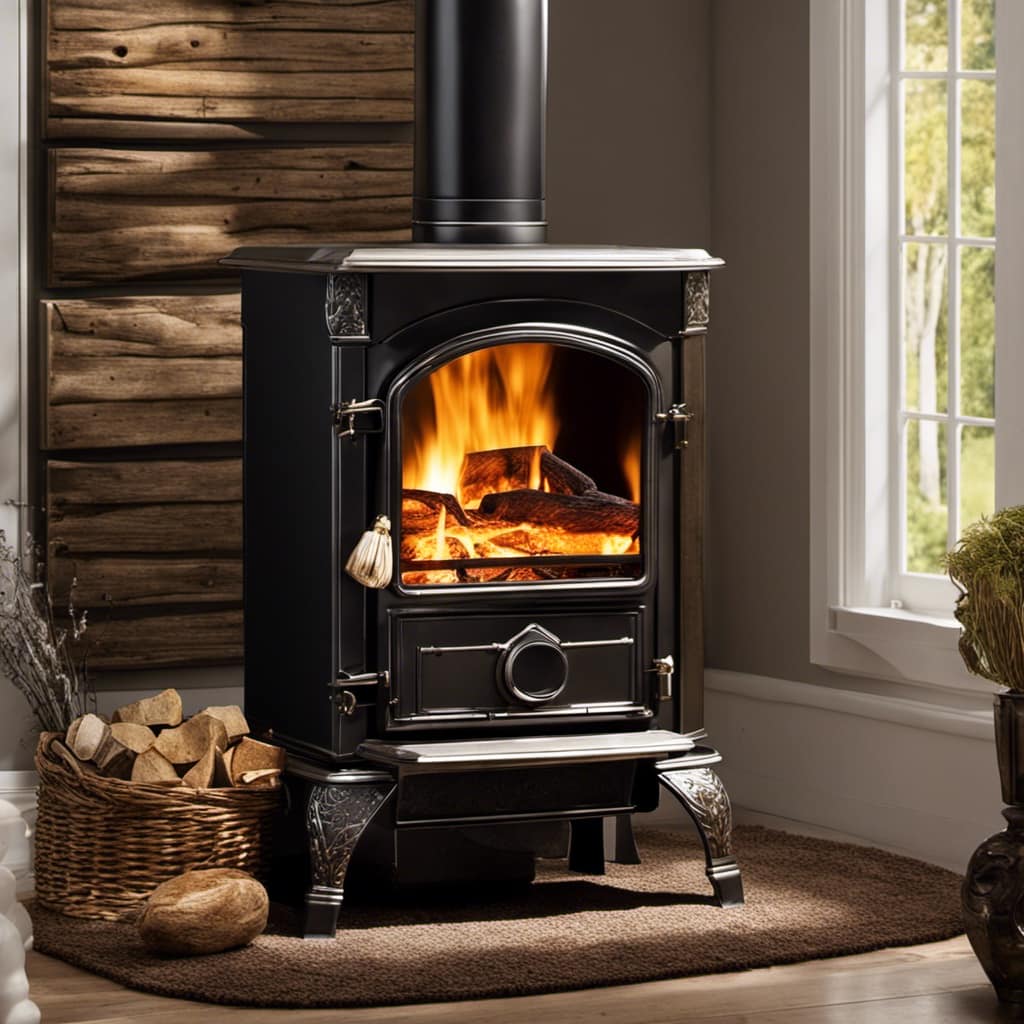
To ensure measuring accuracy and precision, I’ll follow these steps:
-
Find the exact location: Determine the ideal spot for the wood stove pipe to pass through the ceiling. Consider factors such as the stove’s location, clearances, and any obstructions.
-
Measure twice: Use a tape measure to measure the diameter of the stove pipe. Add an extra inch to allow for clearance. Mark the center of the hole on the ceiling.
-
Cut the hole: Use a keyhole saw or a reciprocating saw to carefully cut along the marked line. Take your time and make smooth, controlled cuts. Remember to wear appropriate safety gear.
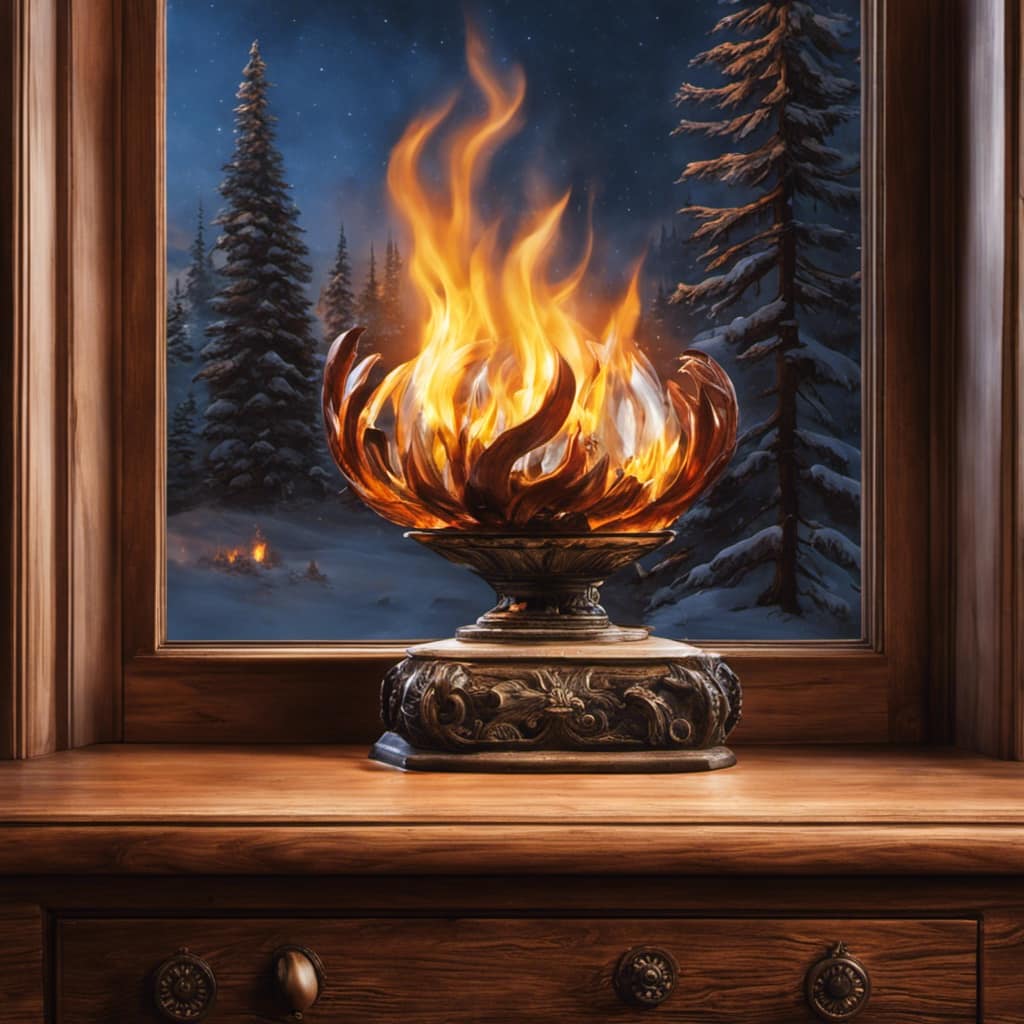
Installing and Connecting the Wood Stove Pipe
Connecting the sections of the stove pipe is the next step in the installation process. To ensure a proper connection, follow these step-by-step instructions:
- Start by gathering all the necessary materials: stove pipe sections, screws, and a screwdriver.
- Place the first section of the stove pipe onto the flue collar of the wood stove.
- Align the seams of the pipe sections and insert the male end of one section into the female end of the other.
- Secure the connection by inserting screws through the pre-drilled holes in the overlapping seams.
- Repeat the process for each additional section of the stove pipe, making sure to align the seams properly and secure them with screws.
- Once all the sections are connected, use a level to ensure that the stove pipe is straight and properly aligned.
- If you encounter any issues during the installation process, consult the troubleshooting guide below.
| Issue | Solution |
|---|---|
| Leaking smoke | Check for gaps in the connections and seal them with high-temperature silicone or stove pipe tape. |
| Loose connections | Tighten the screws securely to ensure a tight seal. |
| Uneven alignment | Adjust the sections as needed to achieve a straight and level installation. |
| Excessive creosote buildup | Clean the stove pipe regularly to prevent creosote buildup and potential chimney fires. |
Insulating and Sealing the Wood Stove Pipe
As I insulate and seal the stove pipe, I ensure that there are no gaps or leaks in the connections. This step is crucial for the proper functioning and safety of the wood stove.
Here’s how I do it:
-
Choose the right insulation type: There are different insulation types available for stove pipes, such as fiberglass, ceramic fiber, and mineral wool. Select an insulation material that’s suitable for high temperatures and has a good R-value to prevent heat loss.

-
Wrap the insulation around the pipe: Start at the bottom and wrap the insulation tightly around the stove pipe. Use high-temperature adhesive tape to secure the insulation in place. Make sure to cover the entire length of the pipe.
-
Seal the connections: To prevent leaks, use high-temperature silicone or metal tape to seal the connections between the stove pipe sections. Apply the sealing material generously and ensure that there are no gaps or openings.
Frequently Asked Questions
What Are the Safety Precautions to Consider When Installing a Wood Stove Pipe Through the Ceiling?
Safety precautions when installing a wood stove pipe through the ceiling include ensuring proper clearance from combustible materials, using fireproof materials, securing the pipe with brackets, and following local building codes. Installation tips: consult a professional if unsure.
Can I Install a Wood Stove Pipe Through a Cathedral Ceiling?
Yes, installing a wood stove pipe through a cathedral ceiling is possible. However, it requires careful planning and consideration of safety precautions. It’s also important to explore alternative heating options before making a decision.

How Do I Determine the Appropriate Height for the Wood Stove Pipe Above the Roofline?
To determine the appropriate height for the wood stove pipe above the roofline, I start by measuring the distance from the stove to the ceiling. Then, I consider the required clearance from the roofline and follow the manufacturer’s guidelines.
Are There Any Local Building Codes or Regulations I Need to Follow When Installing a Wood Stove Pipe Through the Ceiling?
There are local building codes and regulations that I need to follow when installing a wood stove pipe through the ceiling. It’s important to prioritize safety precautions to ensure proper installation.
Can I Install a Wood Stove Pipe Through a Ceiling With Attic Space Above?
I can install a wood stove pipe through a ceiling with attic space above. Safety considerations are important, such as maintaining proper clearances, using fire-resistant materials, and ensuring a secure and stable installation.
Conclusion
As the wood stove pipe pierces through the ceiling, it symbolizes the connection between warmth and comfort, bringing a sense of coziness and security to any space.
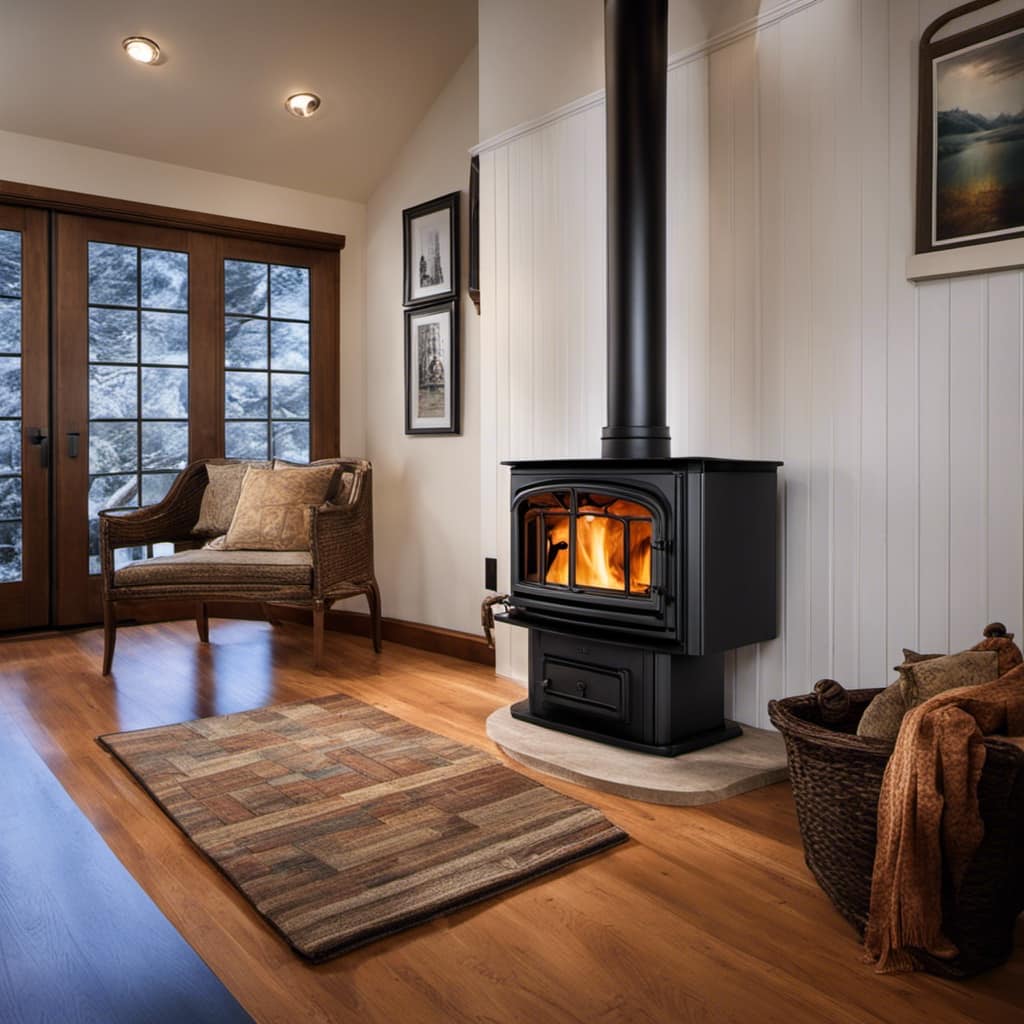
With careful measurements and precise installation, you can create a seamless passage for the pipe, ensuring efficient heat distribution.
The insulation and sealing of the wood stove pipe ensure safety and protect against any potential hazards.
Embrace the transformative power of a wood stove and let its comforting embrace fill your home.
Growing up surrounded by the vast beauty of nature, Sierra was always drawn to the call of the wild. While others sought the comfort of the familiar, she ventured out, embracing the unpredictable and finding stories in the heartbeat of nature.
At the epicenter of every remarkable venture lies a dynamic team—a fusion of diverse talents, visions, and passions. The essence of Best Small Wood Stoves is crafted and refined by such a trio: Sierra, Logan, and Terra. Their collective expertise has transformed the platform into a leading authority on small wood stoves, radiating warmth and knowledge in equal measure.






